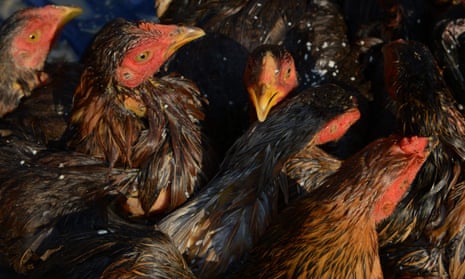A woman has died from H3N8 bird flu in China, the World Health Organization reported – the first known human fatality from the avian influenza strain.
H3N8 is known to have been circulating since 2002 after first emerging in North American waterfowl. It is known to infect horses, dogs and seals.
It had not been detected in humans before two non-fatal cases emerged – both also in China – in April and May last year.
The woman who died was a 56-year-old from Guangdong province in southeast China.
She fell ill on 22 February, was hospitalised for severe pneumonia on 3 March and died on 16 March, the WHO said.
“The patient had multiple underlying conditions. She had a history of exposure to live poultry before the onset of the disease, and a history of wild bird presence around her home,” the UN health agency said in a statement on Tuesday.
“No close contacts of the case developed an infection or symptoms of illness at the time of reporting,” it added.
While exposure to a live poultry market may have caused the infection, “it is still unclear what the exact source of this infection is and how this virus is related to other avian influenza A(H3N8) viruses that are circulating in animals,” the WHO said, calling for further animal and human investigations.
Of the two cases last year, one developed a critical illness, while the other had a mild illness. Both cases likely acquired infection from direct or indirect exposure to infected poultry, the WHO said.
“It appears that this virus does not have the ability to spread easily from person to person, and therefore the risk of it spreading among humans at the national, regional, and international levels is considered to be low,” the Geneva-based organisation said.
“However, due to the constantly evolving nature of influenza viruses, WHO stresses the importance of global surveillance to detect virological, epidemiological and clinical changes associated with circulating influenza viruses which may affect human (or animal) health.”
Human bird flu cases are usually the result of direct or indirect exposure to infected live or dead poultry or contaminated environments.
The WHO said animal influenza infections could result in disease ranging from conjunctivitis or mild flu-like symptoms, to severe acute respiratory disease or even death.
Gastrointestinal or neurological symptoms have been reported but these are rare, it added.
